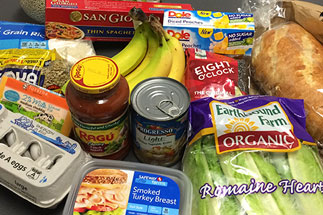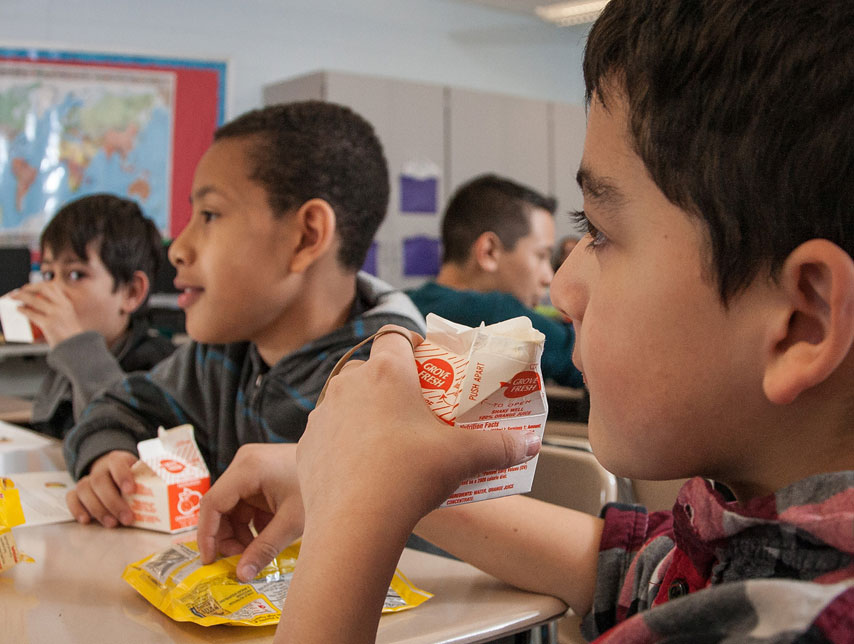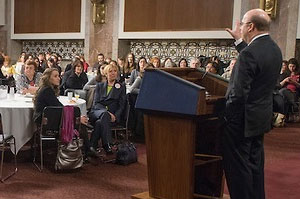Contents
- Row Element
- One Column Section Element
- Two Column Section Element
- Text Block Element
- Expand / Collapse Container and Item Elements
- Trending Section Container and Item Elements
- Learn More Section Container and Item Elements
- Facts List Element
- Twitter Callout Element
- Callout Section Element
- Billboard Section Element
- Video Billboard Section Element
- Events List Element
- Resources List Element
- News and Chat Listing Element
- Custom Home Banner Element
Row Element
Rows are the default structural element in Visual Composer. They can be added manually, or Visual Composer adds them automatically when another element is added directly to the main content area. The row covers the full width of the page (including the left and right margins) and does not center content by default; those styles are primarily generated by the custom modules that are added into the rows. Custom classes can be added to the default row if necessary, e.g. to create sections with full-width backgrounds. Rows can also be split into multiple subcolumns.
One Column Section Element
The One Column Section applies the page’s maximum width and centers the contents. This element is used with text block elements to create basic sections of text content.
Two Column Section Element
The Two Column Section applies the page’s maximum width and centers the contents, but it also styles the contents in columns. This section has styles built in to accommodate the side-by-side publications listings and news-and-chat listings that appear on some pages, but different modules can be used as well.
Note that the column styles are applied via CSS automatically, so splitting the parent row element into columns in Visual Composer is not necessary.
Text Block Element
The text block is the simplest way to add content to the page using Visual Composer. Text blocks include a WYSIWYG editor to add and style text and an HTML editor for more advanced content editing.
Expand / Collapse Container and Item Elements
This element consists of a parent “container” element and child “item” elements. This style is useful for displaying sets of content with a header-and-content pattern, such as an FAQ section, in a compact fashion.
After adding an Expand / Collapse Container to a page, use the “+” button within it to add Expand / Collapse Item elements to it, then add the content for each item.
Trending Section Item elements use the following fields:
- Title: the text that stays visible when the element is collapsed.
- Content: the content that is shown only when the element is expanded.
- Expand / Collapse Item 1Expand / Collapse Item 1 content goes here.
Multiple paragraphs can be used.
- Expand / Collapse Item 2Expand / Collapse Item 2 content goes here.
Multiple paragraphs can be used.
Trending Section Container and Item Elements
This element consists of a parent “container” element and child “item” elements. The child elements are displayed as a slider when enough of them are added to the parent. Note that there is no central database for these items, like Resources or News Posts have – the items that are added to one page are only accessible on that page.
After adding a Trending Section Container to a page, use the “+” button within it to add Trending Section Item elements to it, then add the content for each item.
Trending Section Item elements use the following fields:
- Image: the image displayed at the top of the item.
- Title: the title of the trending item.
- Link text: the text at the bottom of the item styled to look like a link, e.g. “Learn more”.
- Link URL: the URL that the item should link to.

Virtual Lobby Toolkit
View the kit
School Breakfast Infographic
Explore the latest data
Press Room
Latest news
Revised Budget Guidelines
What you need to know
Virtual Lobby Toolkit
View the kit
Virtual Lobby Toolkit
View the kit
Virtual Lobby Toolkit
View the kit
Learn More Section Container and Item Elements
This element consists of a parent “container” element and child “item” elements. The child elements are displayed as columns within the parent element.
The Learn More Section Container itself has editable fields:
- Title: the header of the section.
- Introduction: the text after the title, but before the column items.
After adding a Learn More Section Container to a page, use the “+” button within it to add Learn More Section Item elements to it, then add the content for each item.
To change the background color of a Learn More Section Container, click the pencil icon on the container component, scroll down to the Extra class field, and type white.
Learn More Section Item elements use the following fields:
- Icon: the icon image displayed to the left of the item.
- There are currently six pre-set icons available
- icon-envelope
- icon-download
- icon-toolkit
- icon-money
- icon-education
- icon-hospital
- There are currently six pre-set icons available
- Title: the title of the column.
- Content: the text at the bottom of the item, typically paragraphs with links.
Learn More Section
This is a sample Learn More section.
Contact Us
Name and contact information hereContact Us
Name and contact information hereContact Us
Name and contact information hereFacts List Element
This element generates the style seen below, with an icon to the left of a bulleted list. The sample content below is provided by default in the element’s content editor, but it can actually be replaced if something other than a header and bulleted list is needed instead. The “Disable Automatic Italics” setting can be checked to prevent the element from automatically making the text italicized.
Header
- Fact 1
- Fact 2
- Fact 3
Twitter Callout Element
This element generates a callout with a button for the user to share the current page’s URL, plus whatever text content is entered, via Twitter.
Callout Section Element
This element generates a callout section that can be used to link to any URL. The default content includes a header and body text, but other content can be added or substituted.
Callout Section elements use the following fields:
- Image: the image displayed on the left side of the item.
- Content: the content inside the box, apart from the button.
- Button text: the text inside the button at the bottom.
- Link URL: the URL that the callout should link to.

Billboard Section Element
This element generates a large image-and-text content section with a callout. The default content includes a header and body text, but other content can be added or substituted.
Billboard Section elements use the following fields:
- Section header: the small header at the top of the text section.
- Section title: the large title text toward the top of the text section.
- Main content: the main content of the text section.
- Image: the image used on the right side.
- Inset label: the small, all-caps text at the top of the inset section.
- Inset title: the main text in the inset section.
- Button text: the text in the button in the inset section.
- Link URL: the URL that the inset section button links to.
Our Research

Video Billboard Section Element
This element generates a large image-and-text content section with a callout, intended to link to a video on YouTube or somewhere similar. The default content includes a header and body text, but other content can be added or substituted. Note that the inset call-to-action overlaid on the picture can be omitted by simply leaving these fields blank.
Video Billboard Section elements use the following fields:
- Section header: the small header at the top of the text section.
- Section title: the large title text toward the top of the text section.
- Main content: the main content of the text section.
- Image: the image used on the left side.
- Inset label: the small, all-caps text at the top of the inset section.
- Inset title: the main text in the inset section.
- Button text: the blue text with an arrow in the inset section.
- Link URL: the URL that the inset section button links to.

Events List Element
This element generates a list of the three next upcoming events from the Events section of the site. The element’s title can be customized here, but the rest of the content is pulled from the events listings automatically.
Note that this section uses a full-width background color, so it will not look as intended when used inside a constrained-width column.
Resources List Element
This element generates a list of the four most recently published resource items. All content is pulled automatically from the Resources section. The only customization option on this element is an optional custom class name; enter “list” in this setting to have the resources displayed as a vertical list instead of horizontal cards.
Note that this section uses a full-width background image by default. Use the “list” style as described above if using the section inside a constrained-width column.
Recent Publications & Data
See More Resources- Report
The Supplemental Nutrition Assistance Program (SNAP) relies on a nationwide network of retailers to ensure eligible households can purchase food each month. Yet, a new effort is being led by the U.S. Department of Agriculture (USDA) and the U.S. Department of Health and Human Services (HHS) to promote state-level food choice restriction waivers, which threatens to disrupt this system. Learn more in FRAC’s research brief.
Download the research brief - Report
More children are getting the nutrition they need from afterschool snacks and suppers offered by the Afterschool Nutrition Programs, according to FRAC’s latest report, Afterschool Suppers: A Snapshot of Participation in October 2024. Read the strategies in the report to learn how even more children can be reached with these programs.
Read the report - Fact Sheet
America’s hunger crisis is deepening. Critical federal nutrition programs that keep hunger at bay are under attack. For more than five decades, FRAC has been at the forefront of protecting, strengthening, and expanding the reach of the federal nutrition programs. Discover FRAC’s impact in 2025.
Learn more - Fact Sheet
The Special Supplemental Nutrition Program for Women, Infants, and Children (WIC) provides pregnant, postpartum, and breastfeeding individuals, infants, and children up to 5 years of age from households with low incomes with nutritious foods, nutrition education and counseling, breastfeeding support, and referrals to health care and social services. Learn more about WIC’s impact in FRAC’s fact sheet.
Read the fact sheet
News and Chat Listing Element
This element generates a list of the three most recently published News items and a second list of the three most recently published FRAC Chat items. All content is pulled automatically from these sections.
News
FRAC Chat
The nation is still emerging from the unprecedented disruption of the November government shutdown, during which the Trump administration refused to issue Supplemental Nutrition Assistance Program (SNAP) benefits despite having both statutory authority and sufficient contingency and reserve funds to do so. As a result, millions of Americans, including children, older adults, and people with disabilities, went weeks without the nutrition assistance they rely on to meet basic needs. Multiple courts ruled that U.S. Department of Agriculture (USDA) was required to issue these benefits, yet the administration continued litigating while families experienced hunger, financial distress, and prolonged uncertainty. Public polling found that a large percentage of Americans blame the administration for this failure.
With the nation’s recognition and celebration of Native American heritage just last month, we have all sorts of reasons to think deeply about food, our history, and our shared stories and future.
Millions of people in the U.S., including over 18 million children, are living in a state of fear and chaos perpetuated by the Trump administration, which has enacted a number of policies and practices explicitly designed to scare immigrants from accessing the limited benefits available to them. This includes restricting access to the Supplemental Nutrition Assistance Program (SNAP) for humanitarian-based non-citizens in HR 1.
Custom Home Banner Element
This element generates the custom banner used on the home page.
Options include:
- Main header: the main header text; displays as an H1 element.
- Subheader: the subheader text; displays as an H2 element.
- Callout 1 text: the text in the first callout button.
- Callout 1 link URL: the URL that button 1 should link to.
- Callout 2 text: the text in the second callout button.
- Callout 2 link URL: the URL that button 2 should link to.
- Callout 3 text: the text in the third callout button.
- Callout 3 link URL: the URL that button 3 should link to.
- Inset header: the small header text at the top of the inset section on the right.
- Inset title: the main title of the inset section.
- Inset image: the image used in the inset section.
- Inset link URL: the URL that the inset section image and title should link to.
- Inset related links title: the title above the related links section.
- Related links content: the related links content. Defaults to a bulleted list, but this content can be replaced with another style.


